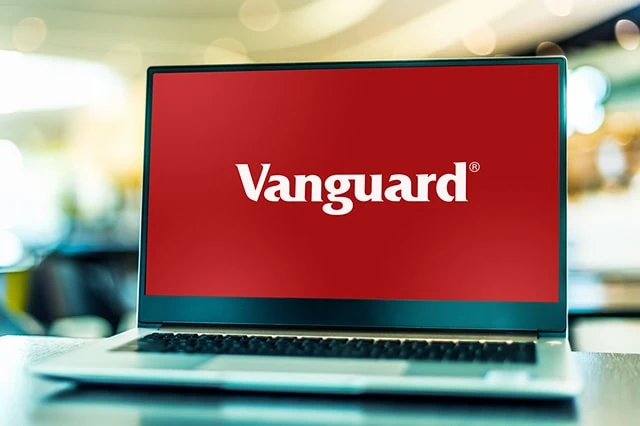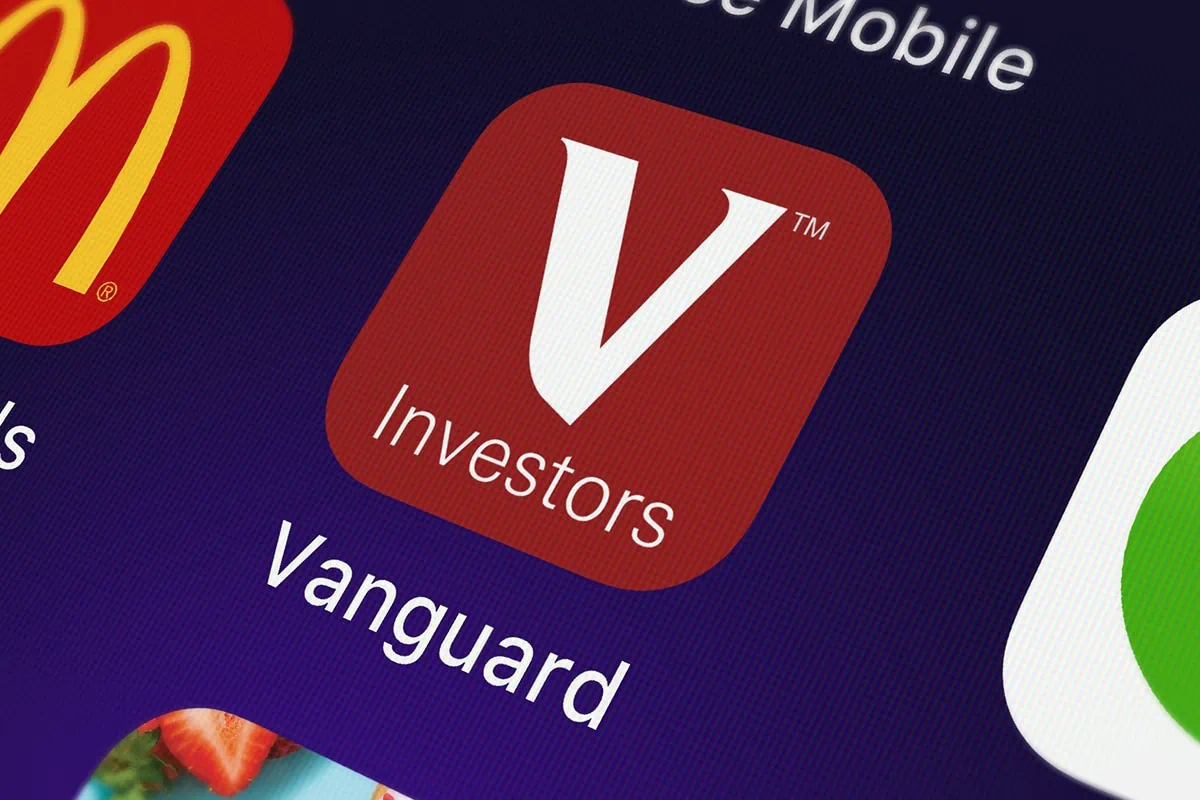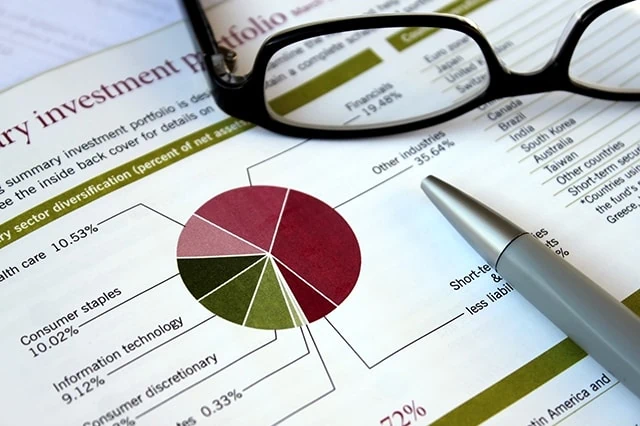If you’re currently or planning on investing toward your retirement, you can thank Vanguard for how inexpensive doing so has become … even if you don’t invest in a Vanguard account or own any Vanguard funds.
After all, it was Vanguard that created the index fund—a product that didn’t just bring down expenses in-house, but triggered more than three decades’ worth of lower fees from fund providers here and around the globe.
Today, Vanguard remains one of the investing world’s low-cost leaders. As such, it offers some of the most popular retirement-focused funds, of both the index and actively managed variety. And many of these funds are right at home in an individual retirement account (IRA).
Let me introduce you to a handful of these IRA-ready funds—each of which is inexpensive, effective, and sport long-term investing objectives. These funds also make sense for many tax-advantaged plans, so you can consider holding them not just in IRAs, but also HSAs or (when available) 401(k)s.
Disclaimer: This article does not constitute individualized investment advice. These securities appear for your consideration and not as personalized investment recommendations. Act at your own discretion.
Editor’s Note: Tabular data presented in this article are up-to-date as of Nov. 20, 2024.
Featured Financial Products
Table of Contents
What Should You Want in a Retirement Fund?

When investing your retirement savings, you need to consider a few critical factors.
To start, a robust retirement portfolio should provide diversification across various asset classes. This typically means stocks and bonds, though it can also mean alternative asset classes such as real estate or commodities. Diversifying your retirement portfolio across these asset classes can help defray your risk and smooth your returns.
Costs matter too. Every dollar spent on fees and expenses is a dollar no longer available to grow and compound over time, so keeping expenses cut to the bone is vital. Good news there: The best Schwab retirement funds will generally have some of the lowest fees and expenses in the business.
And don’t forget taxes. A taxable account, like a standard brokerage account, is better suited to take advantage of certain tax-advantaged investments, such as municipal bonds. For tax-advantaged accounts, such as IRAs, some of the best investments include bond funds and actively managed stock funds. (I’ll explain why when we get to those funds.)
Finally, you ideally want your retirement portfolio to produce regular dividend income. Stocks can regularly experience nasty corrections and bear markets, but a good income fund can provide for your living expenses without forcing you to sell at an inopportune time.
What Types of Funds Are Available in IRAs?

You can think of an IRA as a tax-advantaged brokerage account, insofar as they’re typically self-directed and extremely flexible. In most IRAs, you can own just about any type of fund—mutual funds, exchange-traded funds (ETFs), and even closed-end funds (CEFs).
ETFs typically beat both mutual funds and CEFs on fees, sometimes by a considerable margin. But there are a few reasons to consider Vanguard mutual funds in an IRA.
They’re cheap, for one. Vanguard mutual funds typically offer very low fees—in many cases lower than even many ETFs with a similar strategy.
Also, many of Vanguard’s mutual funds are actively managed, which as I mentioned above is more efficiently held within an IRA. And you very well might prefer to have a human manager overseeing certain strategies rather than buy a fund that simply follows an index.
Why Vanguard?

Vanguard Group is a leader in investment funds. Today, this former upstart mutual fund company has $8.0 trillion in assets under management with an average expense ratio of just 0.08%, or a mere 80¢ for every $1,000 invested. There are currently more than 420 Vanguard funds, including mutual funds and Vanguard ETFs.
Vanguard grew into the powerhouse mutual fund company it is today by taking care of its clients and genuinely looking after their interests. Vanguard funds really started and continue to accelerate the trend of fee compression. But it’s not only the best Vanguard retirement funds that benefit. We all collectively pay less in fees and expenses and enjoy better returns because of the index revolution started and led by Vanguard’s founder Jack Bogle.
The Best Vanguard Retirement Funds for an IRA in 2025

With all that out of the way, let’s dig into some of the best Vanguard retirement funds to hold in an IRA that you might consider diving into this year.
1. Vanguard Explorer Fund Investor Shares

— Style: U.S. small growth
— Assets under management: $3.2 billion
— Expense ratio: 0.45%, or $4.50 per year for every $1,000 invested
— Dividend yield: 0.5%
Vanguard Explorer Fund Investor Shares (VEXPX) is an actively managed mutual fund that invests in predominantly American small- and midsized stocks with growth potential.
VEXPX’s portfolio currently spans 701 stocks with an average market cap of $6.3 billion—right around the midpoint of the mid-cap range ($2 billion to $10 billion), though the majority of its holdings fall into the small- ($500 million to $2 billion) and micro-cap ($500 million or less) ranges. Holdings right now include the likes of Texas tank barge operator Kirby Corp. (KEX) and mid-cap investment bank Houlihan Lokey (HLI).
While larger companies also have the potential for outsized growth, smaller companies, as a group, tend to be more explosive—for better or worse. They benefit from investing’s rule of large numbers (effectively, doubling your revenues from $1 million to $2 million is a lot easier than doing so from $1 billion to $2 billion). And when institutional investors become interested in these stocks, large influxes of new investment money can send their stocks skyward.
But they’re riskier. Smaller firms have fewer and narrow revenue streams, meaning if a core product line struggles, it can more easily lead to stock turbulence and losses. They also have less access to capital than larger companies, so if times get tight, it’s harder for them to survive.
Related: 5 Best Vanguard Retirement Funds [Start Saving in 2025]
Funds like VEXPX help defray that risk by allowing you to buy many smaller companies at once, so one stock’s failure doesn’t torpedo your portfolio’s worth. That risk is further reduced by Explorer’s management style—holdings are selected by five different investment advisors that manage independent subportfolios, allowing them to use their specialities to generate outsized returns while preventing any one manager’s strategy from upending the entire fund’s performance.
You want to hold actively managed funds like VEXPX in tax-advantaged plans like a 401(k) because of how they’re run—that is, human managers tend to add and subtract holdings much more often than an index fund does. To wit, VEXPX has a “turnover ratio” of 40%, which means in a given year, it trades two out of every five holdings. A popular Vanguard S&P 500 index fund, by comparison, has a turnover ratio of just 2%.
This matters because trading in mutual funds can generate capital gains, which are returned to investors as distributions every year. These distributions are taxable, but you can snuff out this liability by not holding these funds in a taxable account.
Related: 7 Best Fidelity ETFs for 2025 [Invest Tactically]
2. Vanguard Dividend Appreciation Index Fund Admiral Shares

— Style: U.S. dividend stock
— Assets under management: $15.7 billion
— Expense ratio: 0.08%, or 80¢ per year for every $1,000 invested
— Dividend yield: 1.7%
— Minimum initial investment: $3,000
The first thing to note about the Vanguard Dividend Appreciation Index Fund Admiral Shares (VDADX) is that, despite its name, it’s not an income-first fund. With a yield of just 1.7%, the dividend income is a little better than the S&P 500, but it’s still almost an afterthought.
Related: 5 Best Vanguard Dividend Funds [Low-Cost Income]
That said, VDADX is one of the very best Vanguard retirement funds precisely because income takes a back seat.
The fund tracks the performance of the S&P U.S. Dividend Growers Index, which is made up of U.S. companies that have increased their dividend payout every year for at least 10 consecutive years. As an additional filter, the index excludes the top 25% highest-yielding eligible companies from the index, as exceptionally high-yielding stocks are often at risk for dividend cuts.
Related: The 7 Best Dividend ETFs [Get Income + Diversify]
There is no better sign of company health than a long history of rising dividends. As the old Wall Street maxim goes: The safest dividend is the one that was just raised. Company boards only raise the dividend when they are confident they will have the cash to back it up.
As a general rule, you want diversified funds in a retirement portfolio, and VDADX certainly fits that bill. Technology, financials and health care are its three largest sector allocations at 23%, 19%, and 15%, respectively.
If the $3,000 minimum is a stretch on your budget, the same strategy is available via the Vanguard Dividend Appreciation ETF (VIG), which charges 0.06% in annual expenses and trades for around $200 per share.
Related: 13 Dividend Kings for Royally Resilient Income
Featured Financial Products
3. Vanguard Dividend Growth Investor Shares

— Style: U.S. large blend
— Assets under management: $52.6 billion
— Expense ratio: 0.30%, or $3.00 per year for every $1,000 invested
— Dividend yield: 1.7%
— Minimum initial investment: $3,000
A dividend-growth strategy isn’t about generating high yield now. Instead, it’s about generating high yield over time—and identifying exceptional companies to boot. A dividend stock with even a modest yield, with years of dividend growth, can eventually deliver a high “yield on cost” (the yield you’re actually earning based on the price you bought the stock). Also, dividend growers tend to be high-quality companies; only firms with strong financials and excellent cash flows can afford to keep paying shareholders more every year.
Related: 7 High-Quality, High-Yield Dividend Stocks
These are exactly the kinds of stocks you get access to through Vanguard Dividend Growth Investor Shares (VDIGX).
Vanguard itself says VDIGX “focuses on high-quality companies that have both the ability and the commitment to grow their dividends over time.” Management has homed in on a tight portfolio of roughly 40 predominantly mega-cap stocks with bulletproof balance sheets. And while all the stocks here have raised their payouts for at least a few years, some have long histories of uninterrupted dividend growth. Procter & Gamble (PG) and Colgate-Palmolive (CL), for instance, are Dividend Kings, which are stocks that have raised their dividends annually for at least 50 consecutive years.
One risk of actively managed funds? A skilled manager might leave. That just happened at VDIGX—Donald Kilbride stepped down from his long-held role as manager as of Jan. 1, 2024, handing the reins to comanager Peter Fisher. But Kilbride will continue to provide ideas for the portfolio. And Morningstar, which gives VDIGX a Gold Medalist rating, says “given the new lead manager’s capabilities, knowledge of the approach, and ample analytical support, the strategy continues to have excellent prospects.”
You want to hold actively managed mutual funds like VDIGX in tax-advantaged plans like an IRA, HSA, or 401(k) because of how they’re run—that is, human managers tend to add and subtract holdings much more often than an index fund does. And trading in mutual funds can generate capital gains, which are returned to investors as distributions every year. These distributions are taxable, but you can snuff out this liability by not holding these funds in a taxable account. (To VDIGX’s credit, turnover isn’t high at all, at 11%, which means in a given year, it trades 11 out of every 100 holdings.)
Related: The 7 Best Dividend ETFs [Get Income + Diversify]
4. Vanguard 500 Index Fund Admiral Shares

— Style: U.S. large-cap stock
— Assets under management: $546.4 billion
— Expense ratio: 0.04%, or 40¢ per year for every $1,000 invested
— Dividend yield: 1.2%
— Minimum initial investment: $3,000
For a solid, long-term growth investment, it’s hard to beat a low-cost S&P 500 index fund.
In fact, virtually no one does, or at least not consistently. The vast majority of fund managers who run large-cap funds (funds that invest in larger companies) struggle to consistently beat the S&P 500 Index, particularly after fees. In the first half of 2023, 60% of active managers underperformed the S&P 500, according S&P Dow Jones Indices. A majority of active managers have failed to beat the S&P 500 in 20 out of the past 23 years.
Related: The 7 Best Mutual Funds for Beginners
So if you can’t beat it, join it.
The Vanguard 500 Index Fund Admiral Shares (VFIAX) boasts more than $540 billion in assets under management, and that’s just in the VFIAX share class. Across all of the mutual fund’s share classes, this fund manages more than $1.3 trillion! That scale is why VFIAX can offer a skinflint expense ratio of just 0.04%—that’s not free, but it’s awfully close.
Related: The 7 Best Vanguard Index Funds for Beginners
The S&P 500 is a collection of the largest and most dominant American companies. To be selected for this stock market index, a company must have a market capitalization of at least $18.0 billion, its shares must be highly liquid (shares are frequently bought and sold), at least 50% of its outstanding shares must be available for public trading, it must have positive earnings in the most recent quarter, and the sum of its previous four quarters must be positive. Once a company is in the index, it doesn’t necessarily get kicked out if it fails to meet all of the criteria at some point in the future, but the selection committee would take that under consideration.
Related: The 7 Best Vanguard ETFs for 2024 [Build a Low-Cost Portfolio]
Turnover (how much the fund tends to buy and sell holdings) tends to be low, as only a handful of stocks enter or leave the index in any given year. This makes VFIAX an extremely tax-efficient option for taxable investors. This may be Vanguard’s oldest index strategy, but it remains one of the very best Vanguard retirement funds.
If the $3,000 minimum is a problem, the exact same strategy is available via the Vanguard S&P 500 ETF (VOO), which charges an even cheaper 0.03% in annual expenses. At time of writing, a single share can be purchased for around $545.
5. Vanguard Global Minimum Volatility Fund Investor Shares

— Style: U.S. large blend
— Assets under management: $220.5 million
— Expense ratio: 0.21%, or $2.10 per year for every $1,000 invested
— Dividend yield: 2.7%
— Minimum initial investment: $3,000
Vanguard Global Minimum Volatility Fund Investor Shares (VMVFX) checks off a lot of boxes. It invests in U.S. stocks. It invests in international stocks. It provides a high level of yield. And it’s designed to reduce volatility.
If you want to diversify your portfolio to also hold non-U.S. stocks, you’ll need a quick terminology lesson. An “international” fund invests only in companies outside the U.S., while a “global” fund invests in both U.S. and international companies. Like many global funds, VMVFX dedicates the largest chunk of its assets to the U.S., which sits at 55% of the portfolio right now. The rest of VMVFX’s holdings are spread across 23 other countries, including Japan (11%), India (4%), and Australia (4%).
Vanguard Global Minimum Volatility’s nearly 250-stock portfolio is chock full of above-average yielders like America’s Merck (MRK) and Lockheed Martin (LMT), Switzerland’s Swisscom (SCMWY) and Brazil’s Itau Unibanco (ITUB). That powers a current near 3% fund yield that’s twice that of the S&P 500.
Related: The 10 Best Vanguard Index Funds You Can Buy
Managers John Ameriks and Scott Rodemer have built this portfolio to deliver less volatility than your average global equity fund. They use a rules-based strategy that’s similar to what an index would provide, but they’re not forced to rebalance the portfolio on a set schedule, and they also use contracts to hedge against currency risk.
Low- and minimum-volatility strategies are generally a trade-off: You sacrifice some upside potential in bull markets to get portfolio protection when markets decline. And in VMVFX’s case, the downside protection is quite good. According to Morningstar Analyst Ryan Jackson, “From its December 2013 inception through April 2023, it captured just 67% of the category index’s downside, with shallower drawdowns and 17% less volatility.”
Also note that VMVFX has a fair bit of turnover, at about 45%, so it’s turning over roughly half of its portfolio every year. As a result, the fund can and does make capital gains distributions, making this a fine fit for a tax-advantaged account like an IRA or HSA.
Related: Best Vanguard Retirement Funds for a 401(k) Plan
6. Vanguard Total Bond Market Index Fund Admiral Shares

— Style: U.S. intermediate core bond
— Assets under management: $100.0 billion
— Expense ratio: 0.05%, or 50¢ per year for every $1,000 invested
— SEC yield: 4.4%*
— Minimum initial investment: $3,000
No retirement asset allocation is complete without bond funds. As an asset class, bond funds play an important role in lowering volatility and providing regular income.
And within the world of Vanguard bond funds, the Vanguard Total Bond Market Index Fund Admiral Shares (VBTLX) stands out as one of the very best Vanguard retirement funds for its combination of competitive yield and rock-bottom fees and expenses. VBTLX is large, with $101.5 billion in the Admiral share class in quality bond assets spread across all of its share classes. And with an expense ratio of just 0.05%, it’s all but free to own.
The Vanguard Total Bond Market Index Fund provides broad exposure to the universe of bonds. Approximately 46% of its portfolio is Treasury or agency debt backed by the U.S. government, and another 20% is invested in government mortgage-backed securities (MBSes). Industrial-sector corporate bonds make up a little over 15%, banks and financial institutions make up 9%, and the rest is spread across foreign bonds, utilities, and commercial mortgage backed securities (CMBSes).
Related: 10 Best Index Funds to Buy
One of the most critical metrics to consider when considering bond funds is duration, which is a measure of interest-rate sensitivity. As an example, a bond with a duration of two years would see its price rise by 2% if interest rates fell by 1% (or conversely, would see its price fall by 2% if interest rates rose by 1%). The actual calculation of duration is fairly complex; it’s the weighted average of the bond’s cash flows. But the key takeaway is that, all else equal, the longer a bond’s time to maturity, the higher its duration—and thus the higher the interest-rate risk.
Related: The 7 Best Fidelity Index Funds for Beginners
The Vanguard Total Bond Market Index Fund, with a duration of 6.3 years, has a medium-term duration with only moderate interest-rate risk. So, apart from the ~4% yield, investors could enjoy respectable capital gains if market interest rates decline in the coming years in response to falling inflation.
If the $3,000 minimum is a problem, the exact same strategy is available via the Vanguard Total Bond Market ETF (BND), which charges an even cheaper 0.03% in annual expenses. At time of writing, a single share can be purchased for around $75.
* SEC yield reflects the interest earned across the most recent 30-day period. This is a standard measure for funds holding bonds and preferred stocks.
Related: The 7 Best Vanguard ETFs for 2024 [Build a Low-Cost Portfolio]
7. Vanguard Wellington Fund Investor Shares

— Style: Moderate allocation
— Assets under management: $13.4 billion
— Expense ratio: 0.25%, or $2.50 per year for every $1,000 invested
— Dividend yield: 2.1%
— Minimum initial investment: $3,000
Vanguard Wellington Fund Investor Shares (VWELX) is Vanguard’s oldest mutual fund—a “balanced” or “allocation” product (read: stocks and bonds) that has been around since 1929. It’s managed by Wellington Management, an investment management company with nearly a century of operational experience.
Related: 9 Monthly Dividend Stocks for Frequent, Regular Income
Wellington, which is considered a moderate allocation fund, invests about two-thirds of assets in stocks, and the other third in bonds. The stock portion of the portfolio currently holds around 75 predominantly large-cap stocks with a median market cap of over $200 billion. It’s a “who’s who” of blue chips such as Microsoft (MSFT), Apple (AAPL), UnitedHealth (UNH), and Procter & Gamble (PG). The bond portfolio is much more broadly diversified, at more than 1,300 investment-grade issues. The majority of that (roughly two-thirds) is invested in corporate bonds, with another 24% in Treasuries, and the rest peppered across mortgage-backed securities, foreign sovereign bonds, and other debt.
Related: 10 Best Dividend Stocks to Buy [Steady Eddies]
Put more succinctly: Wellington is a one-stop shop for your core large-cap stock and bond needs, and its 0.25% in annual expenses is very inexpensive for the skilled management and strong performance track record you’re getting in return. Just make sure you’re considering your own investment needs with this fund—if you don’t want a third of your portfolio to be in bonds, you’ll want to put additional money into individual stocks, equity funds, and/or alternative investments.
Wellington has a fair bit of turnover (40%) and generates a decent chunk of interest income from its bond portfolio. So, if you’re going to invest in VWELX, it makes sense to do so in a tax-advantaged account.
Like Young and the Invested’s content? Be sure to follow us.
Featured Financial Products
8. Vanguard Federal Money Market Fund

— Style: Money market
— Assets under management: $321.6 billion
— Expense ratio: 0.11%, or $1.10 per year for every $1,000 invested
— SEC yield: 4.6%
— Minimum initial investment: $3,000
Of course, interest rates can also go higher, in which case higher-duration bond funds can experience capital losses. That was certainly the case in 2022, when very long-term bonds actually saw greater losses than common stock indexes like the S&P 500.
Related: The 7 Best Dividend ETFs [Get Income + Diversify]
If you are looking for a competitive yield with essentially no duration or interest rate risk at all, the Vanguard Federal Money Market Fund (VMFXX) is a solid option and one of the very best Vanguard retirement funds at today’s prices. This income fund consists entirely of U.S. Treasury bills and other U.S. government obligations and repurchase agreements. This is an extremely conservative option with extremely limited possibility of loss.
Money market funds are very sensitive to Federal Reserve policy moves. It was barely two years ago that money market funds in general offered virtually nothing in yield. But after the most aggressive string of rate hikes in history, VMFXX is a legitimate income fund with a yield ~5%.
Related: Best Fidelity Retirement Funds for a 401(k) Plan
As the Fed has started lowering rates in 2024, VMFXX has seen its own yield fall as its existing portfolio matures and is replaced with newer lower-yielding investments. And as rates continue to fall, you might want to re-evaluate your options. However, for the near term, the Vanguard Federal Money Market Fund remains one of the very best Vanguard retirement funds for its low risk and competitive yield.
9. Vanguard Target Retirement Funds

— Style: Target-date
— Expense ratio: 0.08%, or 80¢ per year for every $1,000 invested
— Minimum initial investment: $1,000
One of the challenges in retirement planning is getting the asset allocation right, or having an asset class mix that is appropriate for an investor at your age and stage of life. An ideal portfolio for a 20-year-old is likely going to be very different from that of a 40-year-old, and both those portfolios will be different from what’s ideal for a 60-year-old.
This is where Vanguard target retirement funds can really add value. Target-date funds—also called life-cycle funds—are a type of mutual fund that are designed to change their asset allocation over time. Target-date funds start out invested heavily in stocks and then slowly reduce their stock exposure and replacing it with bond exposure as they approach their target retirement date, following a glide path.
Related: Beginner’s Guide to Schwab Target-Date Funds
The target retirement dates are intended to be estimates; they don’t have to be super precise. Generally, most mutual fund families will create target-date funds in five-year increments (say, 2025, 2030, 2035, etc.).
Vanguard is a strong player in this space, and the Vanguard Target Retirement Funds tend to be very competitive on price. The funds themselves typically hold both U.S. and international stocks of various sizes, as well as U.S. and international bonds.
For a longer primer on Vanguard Target Retirement Funds, take a look at our Beginner’s Guide to Vanguard Target-Date Funds.
Related: 11 Best Stock Screeners & Stock Scanners
What is the Minimum Investment Amount on Vanguard Mutual Funds?

Vanguard funds are known for being shareholder-friendly. The Vanguard mutual fund company blazed new trails with the index fund, and Vanguard has done more than any other investment firm to keep costs to a minimum for investors.
But there is one hitch. Many of Vanguard’s cheapest funds in terms of fees have initial investment minimums of around $3,000.
If that is a problem for you, don’t sweat it. Most popular Vanguard index funds are also available as ETFs. Most brokers will allow you to buy as little as one share, and some even allow for fractional shares. And if you use a commission-free brokerage, you can buy those ETFs without incurring additional fees. ETF prices vary, of course, but many cost less than $100, and they rarely exceed $400 per share.
Also worth noting? If you invest in a 401(k) and any of these Vanguard funds are available to you there, consider investing in them that way. There is no minimum investment through a 401(k) plan—you just pick an allocation percentage, and when money is taken from your paycheck to contribute to your plan, whatever dollar amount that translates into will be invested into the fund.
Related: Best Vanguard Funds for an HSA
Why Does a Fund’s Expense Ratio Matter So Much?

Every dollar you pay in expenses is a dollar that comes directly out of your returns. So, it is absolutely in your best interests to keep your expense ratios to an absolute minimum.
The expense ratio is the percentage of your investment lost each year to management fees, trading expenses and other fund expenses. Because index funds are passively managed and don’t have large staffs of portfolio managers and analysts to pay, they tend to have some of the lowest expense ratios of all mutual funds.
This matters because every dollar not lost to expenses is a dollar that is available to grow and compound. And over an investing lifetime, even a half a percent can have a huge impact. If you invest just $1,000 in a fund generating 5% per year after fees, over a 30-year horizon, it will grow to $4,116. However, if you invested $1,000 in the same fund, but it had an additional 50 basis points in fees (so it only generated 4.5% per year in returns), it would grow to only $3,584 over the same period.
Like Young and the Invested’s content? Be sure to follow us.
Related: 6 Best Stock Recommendation Services [Stock Picking + Tips]

Stock recommendation services are popular shortcuts that help millions of investors make educated decisions without having to spend hours of time doing research. But just like, say, a driving shortcut, the quality of stock recommendations can vary widely—and who you’re willing to listen to largely boils down to track record and trust.
The natural question, then, is “Which services are worth a shot?” We explore some of the best (and best-known) stock recommendation services.
Related: 12 Best Long-Term Stocks to Buy and Hold Forever
As even novice investors probably know, funds—whether they’re mutual funds or exchange-traded funds (ETFs)—are the simplest and easiest ways to invest in the stock market. But the best long-term stocks also offer many investors a way to stay “invested” intellectually—by following companies they believe in. They also provide investors with the potential for outperformance.
So if your’e looking for a starting point for your own portfolio, look no further. Check out our list of the best long-term stocks for buy-and-hold investors.
Related: 9 Best Monthly Dividend Stocks for Frequent, Regular Income

The vast majority of American dividend stocks pay regular, reliable payouts—and they do so at a more frequent clip (quarterly) than dividend stocks in most other countries (typically every six months or year).
Still, if you’ve ever thought to yourself, “it’d sure be nice to collect these dividends more often,” you don’t have to look far. While they’re not terribly common, American exchanges boast dozens of monthly dividend stocks.
Please Don’t Forget to Like, Follow and Comment

Did you find this article helpful? We’d love to hear your thoughts! Leave a comment with the box on the left-hand side of the screen and share your thoughts.
Also, do you want to stay up-to-date on our latest content?
1. Follow us by clicking the [+ Follow] button above,
2. Subscribe to The Weekend Tea, our weekly newsletter to read more about investing, spending, taxes, and more, and
3. Give the article a Thumbs Up on the top-left side of the screen.
4. And lastly, if you think this information would benefit your friends and family, don’t hesitate to share it with them!






